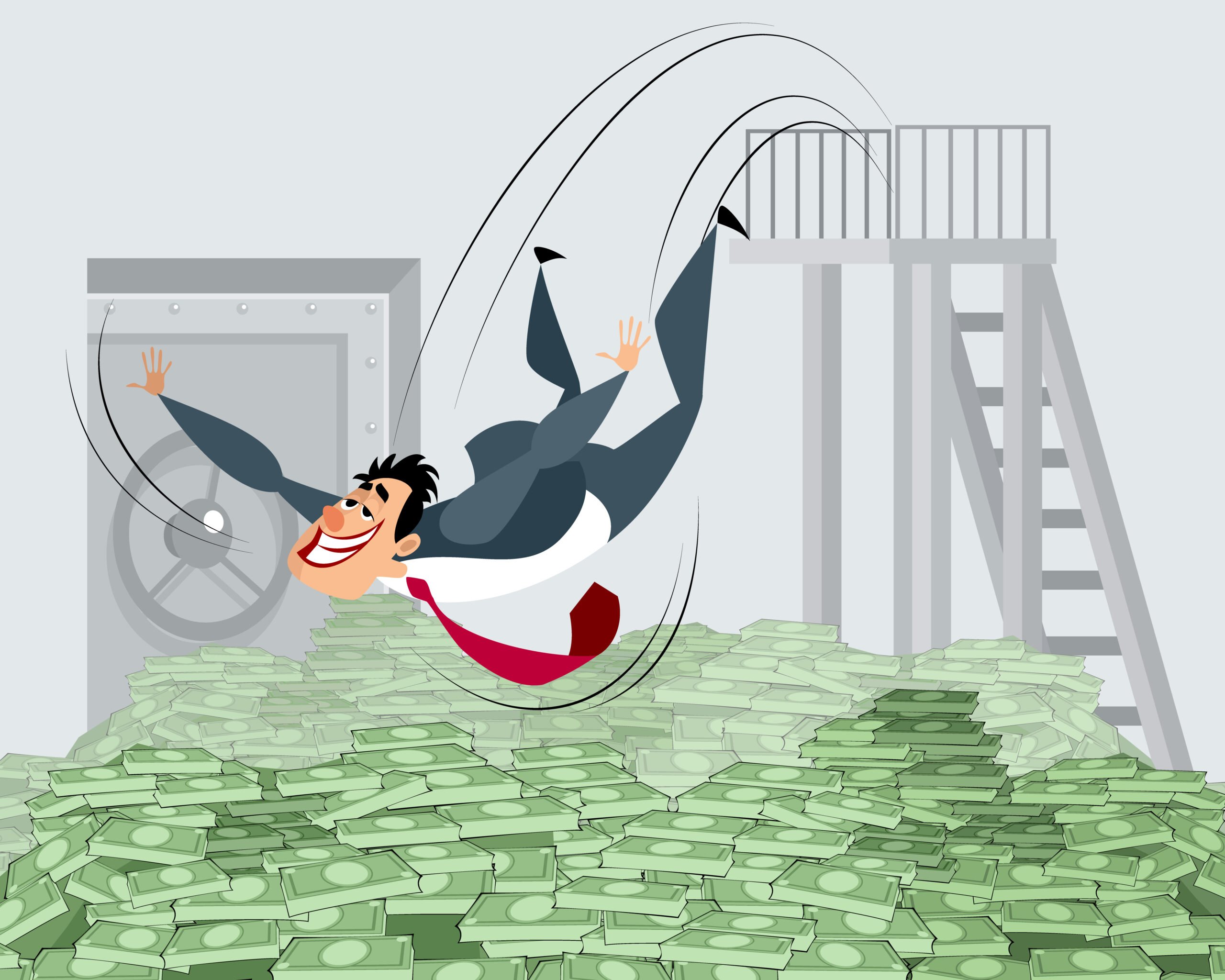In February 2024, the Supreme Court heard oral arguments on a
case that could have far-reaching implications for individuals and
entities that own or use copyrighted works. The case of Warner
Chappell Music, Inc. v. Nealy, addresses the important, unresolved
issue of whether the copyright discovery rule places a time
limitation on the recovery of damages.
Depending on the outcome, the decision in that case could
empower copyright owners to recover damages tracing back decades
from unsuspecting defendants, or it could leave little recourse for
copyright owners who are unable to quickly discover their work has
been infringed.
The consequences for copyright owners may be even broader if the
Supreme Court decides to pick up another looming case. Hearst
Newspapers LLC v. Martinelli could lead to an outright rejection of
the discovery rule in the copyright context.
What Is The Copyright Discovery Rule?
The Copyright Act of 1976 sets a statute of limitations of three
years that begins when the infringement claim “accrued.”
Once the statute of limitations period has passed, the copyright
owner can no longer bring a claim for that infringing activity.
In the context of copyright infringement, courts have adopted a
flexible approach to the statute of limitations. Known as the
discovery rule, this approach provides that the statute of
limitations period does not begin—and that three-year clock
does not start ticking—until the plaintiff actually discovers
or reasonably should have discovered the infringing activity.
Consider the following example: a work was infringed in 2012,
but the copyright owner, despite acting with due diligence, did not
discover that infringing activity until January 1, 2020. Applying
the discovery rule, the statute of limitations would not begin
until that date of discovery. This means the plaintiff could bring
a timely claim at any point before January 2, 2023.
Circuit Split On Damages Under The Discovery Rule
While the courts have been generally consistent in applying the
discovery rule, a major split between the circuits exists on the
issue of how far back in time plaintiffs are entitled to collect
damages under the discovery rule. The split arises from differing
interpretations of language from the 2014 Supreme Court decision in
Petrella v. MGM. Importantly, this split involves the Second
Circuit (where New York is located) and the Ninth Circuit (where
California is located), where most copyright cases are
litigated.
The Second Circuit’s Approach To Damages: “Look-Back
Period”
In the wake of Petrella, the Second Circuit adopted a more
limited conception of the timeframe for damages under the discovery
rule. Under this formulation, plaintiffs are unable to recover
monetary damages for any infringing act occurring more than three
years prior to their filing suit. That three-year period is
commonly referred to as the “look-back period.”
This limitation is likely to encourage many plaintiffs to bring
their copyright infringement cases in a different circuit in the
hopes of collecting damages from infringements that occurred before
the “look-back period.”
The Ninth Circuit’s Approach To Damages: No Time Limit
The Ninth Circuit reached the opposite conclusion with regards
to the timeframe for damages under the discovery rule. Under the
Ninth Circuit approach, so long as the claim is timely under the
discovery rule, there is no time limitation on recovering damages.
Plaintiffs are thus able to seek damages for infringing activity
that occurred decades ago so long as they first discovered those
infringing activities within the past three years.
This approach, which is far more beneficial to the copyright
owner, was subsequently adopted by the Eleventh Circuit in
Nealy.
Background On Warner Music V. Nealy
This case arose from an infringement claim brought by music
producer Sherman Nealy. Nealy was active in recording and releasing
music during the 1980s. Some of Nealy’s songs were later
incorporated in other musical works, including an interpolation in
Flo Rida’s 2008 hit “In the Ayer.” Nealy did not
discover these alleged infringements until 2016. In 2018, Nealy
sued Warner Chappell Music and other defendants, alleging that
Warner had infringed on his songs.
The trial court followed the Second Circuit approach and
foreclosed Nealy from recovering damages for infringing activities
occurring prior to the three-year “look-back period.”
Nealy appealed and the Eleventh Circuit reversed. In doing so, the
Eleventh Circuit adopted the Ninth Circuit approach that damages
predating the “look-back period” are recoverable so long
as the claim is timely.
The Supreme Court agreed to hear the case to resolve the circuit
split. The opposing parties made their oral arguments to the
Supreme Court on February 21, 2024. Counsel for Nealy argued that
the flexible Ninth Circuit approach to damages was in line with the
statutory provisions of the Copyright Act.
Counsel for Warner argued that the Court should reject the
discovery rule entirely and instead adopt the injury rule in
copyright infringement cases. Under the injury rule, the statute of
limitations period would begin at the moment the infringing
activity occurred. Therefore, a copyright infringement claim would
have to be brought within three years of the date on which that
particular infringing activity occurred, even if the copyright
owner did not discover the infringement until much later. However,
when the Supreme Court agreed to hear the case, the Court presumed
that the discovery rule applies and expressly limited their review
to resolving the circuit split on damages under the discovery
rule.
Potential Outcomes & Implications
The Supreme Court is currently considering taking on another
case, Martinelli v Hearst Newspapers, LLC, that could substantially
impact the resolution of Nealy. Martinelli is a Fifth Circuit case
that could allow the Court to address the broader question raised
by Warner’s counsel in Nealy: whether the discovery rule should
apply at all in copyright cases.
With Martinelli waiting in the wings, the range of possible
outcomes is broad. The first possibility is that the Court decides
not to take on the Martinelli case and merely resolves the circuit
split at issue in Nealy. In this scenario, the Court would
presumably adopt either the Second Circuit approach, which limits
damages to the “look-back period,” or the Ninth Circuit
approach, which does not place a time limitation on damages as long
as the statute of limitations has not elapsed.
If the Court were to adopt the Second Circuit approach, this
would be a major blow to copyright owners, particularly emerging
creatives who are less likely to quickly catch and respond to
infringing activity. These creatives often do not discover
infringements until several years later, at which point their
opportunity to recover damages would be foreclosed.
If the Court were to adopt the Ninth Circuit approach, this
would significantly bolster copyright owners’ ability to
recover for infringement of their works. However, it would also
arguably disregard an important purpose of the statute of
limitations and put some defendants in unfair positions. Statutes
of limitations are intended to protect parties against surprise
claims raised many years later when relevant evidence may be less
accessible. If one can be held liable for damages stemming from
infringing activity from decades ago, the statute of limitations
would be a significantly weaker protection.
Alternatively, the Supreme Court may instead decide to resolve
the broader question raised by Martinelli before deciding Nealy.
The Court could do this by taking on Martinelli and then either
temporarily holding off on deciding Nealy or dismissing Nealy.
If the Court takes up Martinelli and decides that there is no
discovery rule under the Copyright Act, the implications would be
even broader. First, it would overrule the recognition of the
copyright discovery rule in every circuit that has addressed its
existence. Second, that ruling would presumably designate the
injury rule as the applicable rule in copyright infringement cases.
Copyright owners could no longer bring timely claims more than
three years after the infringing act and would thus be
significantly limited in their ability to sue and recover for
copyright infringement.
Conclusion
Regardless of how the Supreme Court decides to resolve these
questions, copyright owners must remain proactive in protecting
their works from infringement. Even if the Supreme Court upholds
the discovery rule and the Ninth Circuit approach to damages, a
copyright owner could still be barred from recovering for older
infringements if they fail to exercise reasonable diligence to
discover those infringements. An experienced copyright attorney can
help navigate the many complex issues, claims, and statutes of
limitations concerns that may arise when you believe your work has
been infringed upon.
Contributions made by Ryan Whyte.
The content of this article is intended to provide a general
guide to the subject matter. Specialist advice should be sought
about your specific circumstances.
#Unraveling #Copyrights #Discovery #Rule #Supreme #Court #Saga #Copyright






